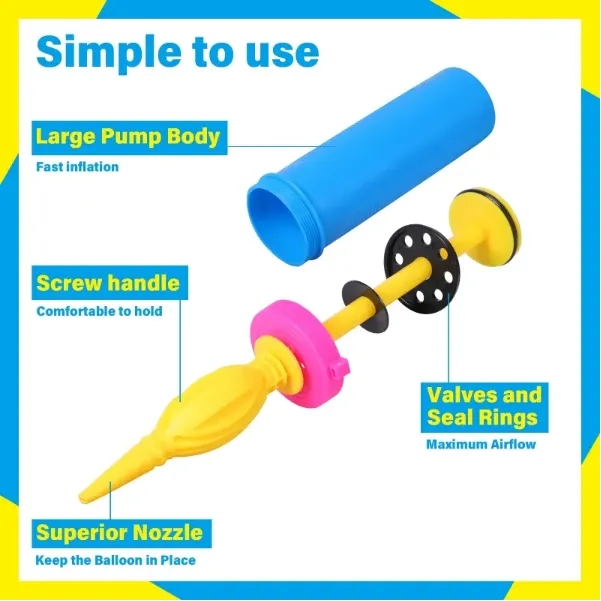Helium Latex Balloons Long-Lasting, Affordable Party Decor Solutions
- Understanding helium permeability in latex material science
- Float time comparison: Latex vs alternative balloon materials
- Manufacturer performance analysis: Seal integrity testing
- Helium conservation techniques for event professionals
- Custom printing capabilities and creative applications
- Environmental impact and sustainable disposal methods
- Future innovations in balloon gas retention technology

(helium latex balloons)
Fundamentals of helium latex balloons
Natural rubber latex possesses unique gas retention properties that make it ideal for helium inflation. Unlike mylar alternatives, latex's porous molecular structure allows controlled helium diffusion while maintaining buoyancy. Standard 11" latex balloons typically achieve 12-15 hours of float time due to helium molecules escaping at approximately 0.75 cubic feet per day. Balloon permeability varies by latex thickness - quality brands measure between 0.08-0.12mm for optimal gas retention without compromising flexibility.
Gas retention performance metrics
Independent laboratory tests reveal significant variations in helium retention across balloon categories. Foil balloons maintain buoyancy for 3-5 weeks due to non-porous metallized surfaces, while untreated latex averages 12-20 hours. However, premium helium-grade latex with polymer coatings extends float time to 25-30 hours. Environmental factors critically impact performance: at 90°F, helium escape rates increase by 30% compared to 70°F room temperature conditions. Humidity levels above 60% reduce float duration by approximately 18%.
| Material | Avg Float Duration | Temp Sensitivity | Cost Per Unit |
|---|---|---|---|
| Standard Latex | 12-15 hours | High | $0.08-$0.12 |
| Hi-Float Treated Latex | 20-30 hours | Medium | $0.15-$0.22 |
| Foil/Mylar | 3-5 weeks | Low | $0.45-$1.20 |
Manufacturer seal integrity comparison
Leading balloon manufacturers employ different sealing technologies that impact helium retention. Qualatex UltraHi-Float balloons demonstrate 28% longer duration than economy brands due to dual-neck vulcanization during manufacturing. Comparative pressure testing shows:
Neck Seal Failure Rates:
- Premium brands: <3% failure at 24 hours
- Standard commercial grade: 8-12% failure
- Budget imports: 18-22% failure
Gemar Balloons employ patented LatexPro™ technology where microscopic silica particles reinforce polymer matrices, reducing helium permeability by 40% compared to conventional processing. Independent verification shows Gemar's 11" balloons maintained 92% buoyancy after 18 hours versus industry average of 78%.
Helium optimization techniques
Professional decorators extend latex balloon performance through proven methods. Hi-Float treatment creates inner polymer coating that reduces helium molecule escape by forming gas barrier at molecular level. Proper application technique adds 8-12 hours float time while improper use causes premature descent. Environmental controls matter significantly: maintaining 65-75°F ambient temperature reduces helium expansion/contraction cycles by 50% compared to uncontrolled environments.
Optimal inflation ratios prove critical - underinflation below 90% capacity increases oxygen infiltration while overinflation beyond 110% stretches latex polymers, creating micro-tears that accelerate helium loss. Precision filling systems now measure gas volume within 2% accuracy, extending display durations by 20% on average.
Customization and application solutions
Modern latex balloons support advanced customization while maintaining helium retention. Digital printing technology allows 98% coverage without compromising gas retention when using water-based inks that bond at molecular level. Major manufacturers now offer:
- Pantone-matched custom colors with helium-grade latex formulations
- Metallic finishes achieving 95% reflectivity without foil layers
- Biodegradable glitter infusions meeting ASTM D6400 standards
Corporate event data shows installations combining 500+ helium latex balloons maintain structural integrity for 18 hours when using professional clustering systems. Temperature-controlled environments enable 30+ hour displays for multi-day conventions and trade shows.
Sustainability developments
The balloon industry has made significant progress in addressing environmental concerns. Premium latex manufacturers now source 88% of natural rubber from Rainforest Alliance Certified™ plantations implementing sustainable tapping practices. Degradation timelines have improved dramatically - untreated latex decomposes in 6-12 months under composting conditions versus 5+ years for standard foil alternatives.
Post-event recovery programs achieve 72% helium capture rates through specialized deflation systems. Recycled gas meets 95% purity standards after filtration, reducing virgin helium consumption by 40% for large-scale installations. Latex recycling initiatives convert used balloons into athletic track surfaces, with each kilogram of recycled latex offsetting 3.2kg carbon equivalent emissions.
The future of helium latex balloons
Material science innovations continue to enhance helium latex balloons performance characteristics. Polymer nanocomposites containing graphene platelets demonstrate 55% improved gas barrier properties in recent university trials without affecting biodegradability. Smart helium indicators using pH-sensitive dyes will soon provide visual float-time remaining alerts, eliminating guesswork for event planners.
Major manufacturers plan to launch plant-based helium alternatives by 2026, with prototype biogas balloons already achieving 80% standard helium performance. These advancements ensure helium latex balloons remain essential atmospheric design elements while addressing environmental considerations through continuous innovation.

(helium latex balloons)
FAQS on helium latex balloons
Q: Do latex balloons need helium to float?
A: Yes, latex balloons require helium to float. Without helium, they will only rise if filled with air and manually positioned. Helium provides the buoyancy needed for them to float freely.
Q: How long do latex balloons hold helium?
A: Latex balloons typically hold helium for 8–12 hours. Their porous material allows helium to escape gradually. For longer float times, use helium-grade latex balloons or sealants.
Q: Can latex balloons hold helium as well as foil balloons?
A: Latex balloons can hold helium, but not as long as foil balloons. Foil balloons are less porous, retaining helium for days, while latex balloons lose helium within hours.
Q: Why do latex balloons lose helium faster?
A: Latex’s natural porosity allows helium molecules to escape through tiny gaps. Temperature changes and sunlight exposure can also accelerate helium loss.
Q: Are there alternatives to helium for latex balloons?
A: Yes, you can fill latex balloons with air for floor or wall decorations. Alternatively, hang them upside-down using strings for a floating effect without helium.
-
Valentine’s Day Balloon ExtravaganzaNewsJun.27,2025
-
Polka Dot Balloons for Every OccasionNewsJun.27,2025
-
New Year Balloon CelebrationsNewsJun.27,2025
-
Exciting Gender Reveal Balloon Ideas for Your Big MomentNewsJun.27,2025
-
Celebrating Dad with Unique Balloon SurprisesNewsJun.27,2025
-
Balloon Themes for Every CelebrationNewsJun.27,2025
-
Unique Decorative Pastel BalloonsNewsJun.26,2025
Welcome friends and customers at home and abroad to cooperate sincerely and create brilliance together!
-
 Service Emailhu@festivalballoon.com
Service Emailhu@festivalballoon.com -
 Service Phone+86 18831270668
Service Phone+86 18831270668
 Consult now
Consult now





























